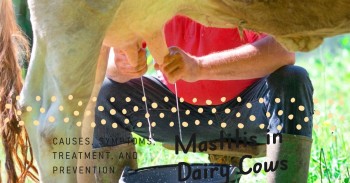BOVINE EPHEMERAL FEVER
Synonyms:
Three-day sickness, Bovine Epizootic Fever,
Three-day stiffsickness, Dragon boat disease
Definition:
Bovine Ephemeral Fever is a noncontagious
epizootic arthropod-borne viral disease which affects the cattle and water
buffaloes characterized by sudden onset of fever, depression, stiffness,
lameness, rapid recovery.
Egiology:
- Family Rhabdoviridae
Genus Ephemerovirus
Type
Species Bovine ephemeral fever virus
Epidemiology:
- It is most prevalent in the wet season in the tropics
and in summer to early autumn in the subtropics or temperate regions. It
disappears abruptly in winter.
- It is first described in South Africa in 1906
- tropical, subtropical, and temperate countries in
Africa, Asia, and Australia
- Thailand since 1984
Transmission:
- Insect bite
- Transmission by contact or fomites does not occur
- not spread from cow to cow
- Culicoides ; Mosquitoes
Clinical Signs:
- Depressed
- High fever (105-107 F) with biphasic or triphasic
fever
- Shivering
- Tearing
- Drooling
- Increased heart rate
- Tachypnea or dyspnea
- Serous ocular and nasal discharge
- Anorexia
- Decreased milk production
- Weight loss
- Stiffness and lameness
- More severe in high BW animals
- Severe case
o Muscle stiffness
o Drag feet when forced to walk
o Lying down, with hide limbs outstretched to relieve muscle cramp
o Lie down for three days
- Morbidity may reach to 30%
- Low mortality
- Causes of the death
- Pneumonia from secondary infection
- Muscle damaged and inflammation from long period lying
down
- Pregnancy toxemia (fatty liver syndrome)
Gross lesions:
- Small amounts of fibrin-rich fluid in the pleural,
peritoneal, pericardial cavities and joint capsules
- Synovial surfaces of the spine may have fibrin plaques.
- Lungs may have patchy edema.
- Lymphadenitis
- Focal necrosis can be found in major muscle groups in
some cases.
Hematology:
- Absolute rise in leukocyte numbers
- Rapid fall in circulating lymphocytes
- Return to normal levels after 3-4 days
- Serum fibrinogen level rises to 3-4 times the normal
level and returns to normal 1-2 weeks after recovery.
- Total serum calcium level falls to 1.8 mmol-1 during
the febrile phases and returns to normal on recovery.
- This is the biochemical event that causes the reversible
early paralysis.
Diagnosis:
- Clinical signs
- Sero-conversion: paired serum
- SN test
- ELISA
- Gross lesion
Differential Diagnosis:
- Bluetongue
- Babesiosis
- Blackleg
Treatment:
Recovery with no treatment
In severe cases
- Anti-inflammatory drug: NSAIDs
- Fluid therapy and calcium
- Antibiotics if needed
Recovery period 3-4 days.
Prevention and Control:
- Vector control
- Vaccine: Attenuated lived virus vaccine (Australia)


















